Infection Prevention Week: Clean Hands, Clear Wins — How Soapy Showed Up Around the World
Infection Prevention Week: Clean Hands, Clear Wins — How Soapy Showed Up Around the World
WHY HAND HYGIENEEDUCATIONAL / HISTORICALCLINICAL STORIES
10/23/20254 min read
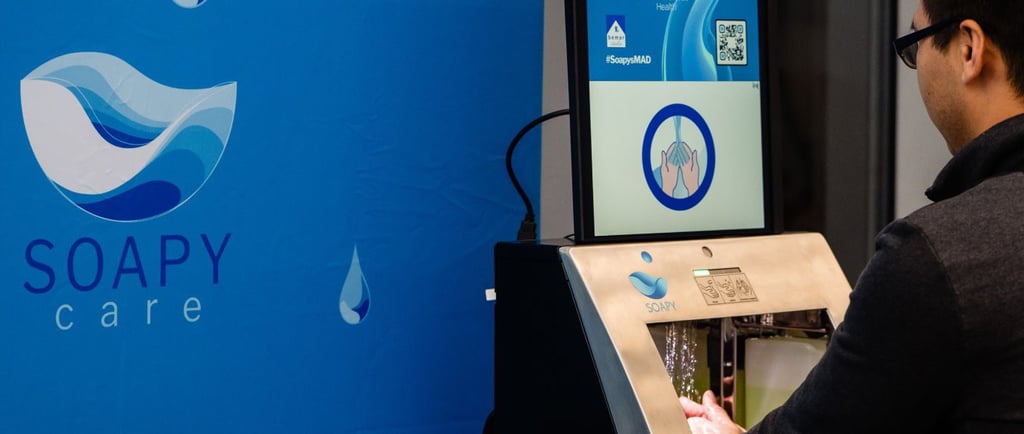

Hand hygiene isn’t glamorous, but it is the simplest, highest-value clinical skill on earth. International Infection Prevention Week (IIPW) is the annual reminder that small actions save lives. This year, Soapy rolled up our sleeves worldwide to help clinical teams sharpen their techniques, boost compliance, and make clean hands the default.
A quick origin story: who started IIPW and why it matters
International Infection Prevention Week began in 1986, launched by the Association for Professionals in Infection Control and Epidemiology (APIC) to spotlight practical steps that prevent infections and to celebrate the people who lead that work. The idea caught on because it solves a universal problem: pathogens don’t care about borders, budgets, or job titles. Every facility has the same daily challenge of turning guidelines into muscle memory at the point of care.
Why it matters now:
Healthcare-associated infections (HAIs) prolong stays, raise costs, and impact outcomes.
Hand hygiene is the first and most proven barrier.
Training alone is never enough; teams need feedback, reinforcement, and systems that make the right action the easy action.
Soapy’s IIPW mission: move from posters to practice
During IIPW, our teams partnered with hospitals, clinics, and training centers across North America, Europe, Latin America, and the Middle East to deliver short, high-impact learning experiences that blend technique coaching with immediate, objective feedback. The goal wasn’t more lectures. It was hands-on, repeatable practice with measurable improvement.
What we brought to the floor
SoapyPro stations for live technique guidance. The system coaches sequence and coverage in real time and verifies quality objectively. No clipboard debates. No guesswork.
Micro-trainings that fit rounds - Fifteen-minute pit stops between tasks: “wash, learn, verify, improve.”
Pop-up skill labs for new staff and float pools - Rotating stations in staff lounges and unit corridors to meet people where they are.
Leaderboards and friendly competitions - Unit-level dashboards and low-stakes contests turned repetition into momentum.
Data huddles - Rapid reviews with infection prevention (IP) teams to identify friction points and celebrate quick wins.
What clinicians practiced and perfected
Five Moments, applied
We focused on the real-life triggers and common misses for each moment, not just the poster.Coverage blind spots
Thumbs, fingertips, interdigital spaces, and the dorsal hand got special attention.Technique tempo
Quality beats speed, but we trained for both: proper sequence in the right time window.Soap-and-water vs ABHR
When to prefer each, and how to execute either method to standard.Glove discipline
Gloves don’t replace hand hygiene; they change when and why you clean.
What changed on the units
From subjective to objective: Teams saw real technique scores and immediate feedback.
From reminders to routines: Frequent, short practice sessions created automaticity.
From “compliance” to “craft”: Staff treated hand hygiene like any clinical skill worth mastering, because they could see themselves improving.
Why Soapy tech works for behavior change
Let’s be honest: compliance drifts when feedback is slow, vague, or confrontational. Soapy’s approach solves that.
Real-time guidance
During the wash, the system nudges sequence and coverage. No awkward audits later.Objective verification
Technique isn’t a matter of opinion. The device confirms quality, and the dashboard shows trends.Transparent, role-aware dashboards
Unit leaders can view aggregate performance. Individuals see their own progress. Everyone gets clarity without blame.Gamified repetition
Short, frequent practice beats annual lectures. Scores make it sticky and even a little fun.Audit-ready records
Documentation supports training, quality initiatives, and regulatory alignment.
Micro-case moments from IIPW (patterns we saw repeat)
New hires ramp faster when the technique is coached by an always-available station rather than waiting for the next in-service.
Seasonal respiratory surges are easier to prepare for when units set a “clean-hands baseline” each fall.
Float staff consistency improves when every unit uses the same guidance and verification, not just local norms.
Quality teams can shift debates from anecdotes to numbers and focus on removing obstacles to good practice.
Education that sticks: the Soapy playbook you can reuse
Kickoff huddle
Set a one-week goal: technique score target, number of verified sessions, or unit participation rate.Daily “skill sprints”
10–15 minute windows at shift change for optional reps. Track streaks. Celebrate badges.Transparent scoreboard
Post unit-level progress on a shared screen. Normalize improvement, not perfection.Friday five
End the week with five fast lessons pulled from real data: top misses, top fix, shout-outs.Reset and roll
Take what worked from IIPW and bake it into monthly refreshers.
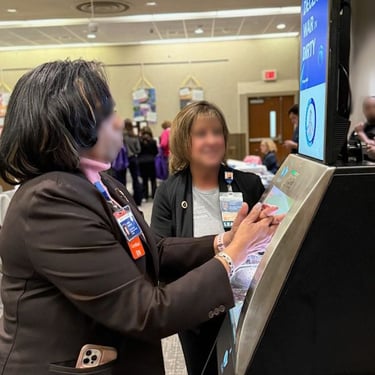





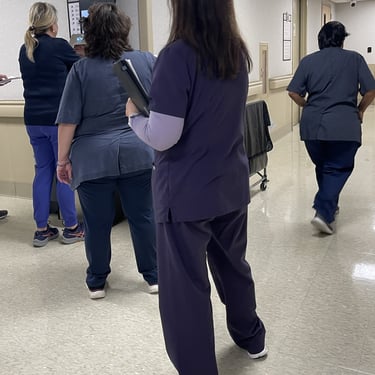

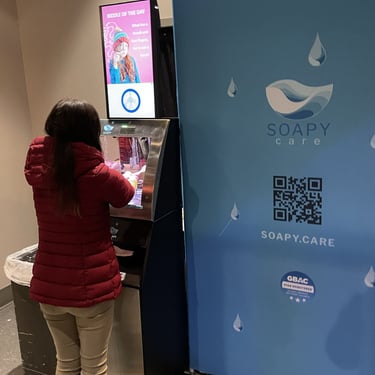
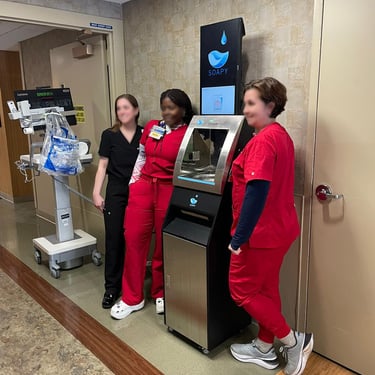
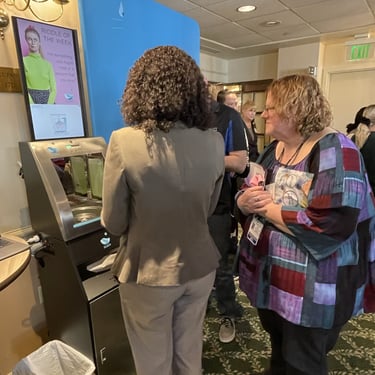





Frequently asked by staff during IIPW
“How long should a thorough wash actually take?”
Long enough to do the full sequence with complete coverage. Rushing is the enemy of quality; the station helps you hit time and technique together.
“Do I really need to wash if I’m using gloves?”
Yes, before and after glove use. Gloves can be contaminated during donning and doffing, and they don’t fix technique gaps.
“Is sanitizer good enough?”
ABHR is excellent for most indications when hands aren’t visibly soiled. Soap and water for spores, visible soil, or after restroom use. Execute either method properly.
Beyond IIPW: keeping momentum all year
Onboard with mastery: Make verified technique part of day-one training.
Quarterly refreshers: Short cycles beat marathon sessions.
Tie data to outcomes: Link technique improvements to device-associated infection trends and share results in staff meetings.
Close the loop: When audits or events surface a pattern, turn it into next week’s micro-training.
Thanks to the people who make infection prevention real
International Infection Prevention Week exists because IP leaders, nurses, techs, EVS, therapists, and physicians do the work. Soapy’s role is to give those professionals tools that lower friction, raise confidence, and make quality visible. This week reminded us that when training is practical and feedback is instant, clean hands stop being a reminder and start being a reflex.
Bring Soapy to your next training day
If your team wants to turn hand hygiene from a poster into a practiced skill with measurable gains, we’ll help you run a district-wide, system-wide, or unit-level program with coaching, stations, and dashboards that fit your workflow. Clean hands, fewer infections, better days on the floor.
Soapy In The News
ABOUT SOAPY
© 2025. All rights reserved Soapy Care LTD | Designed by VeloGTM LLC
